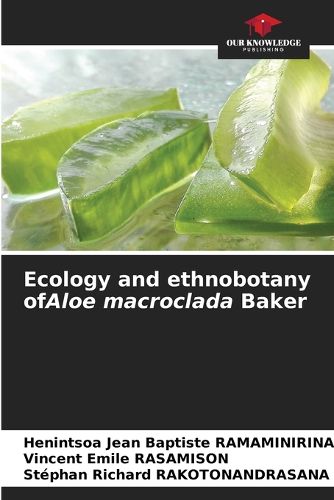Readings Newsletter
Become a Readings Member to make your shopping experience even easier.
Sign in or sign up for free!
You’re not far away from qualifying for FREE standard shipping within Australia
You’ve qualified for FREE standard shipping within Australia
The cart is loading…






This title is printed to order. This book may have been self-published. If so, we cannot guarantee the quality of the content. In the main most books will have gone through the editing process however some may not. We therefore suggest that you be aware of this before ordering this book. If in doubt check either the author or publisher’s details as we are unable to accept any returns unless they are faulty. Please contact us if you have any questions.
The ethnobotanical survey carried out at the three sites revealed traditional uses forAloe macroclada in the treatment of digestive ailments, certain metabolic diseases, wounds, gonorrhea and asthma. It has also been used in cosmetology and as a soil protection agent. The flora associated with the target species comprises 44 species belonging to 37 genera and 20 families. The most represented families are: Poaceae, Asteraceae and Fabaceae. In the species-poor, open vegetation zone of Anjeva, density is relatively high, but biomass is low. Where vegetation is richer and more diversified, as observed in Miandrarivo, density is low and biomass high. An adult individual produces an average of 19 to 40 leaves per plant, ranging in size from 40.00 to 64.00 cm long and 10.00 to 12.50 cm wide. Anthropogenic pressures such as bush fires, expansion of cultivable land and illegal collection represent a crucial threat to Aloe macroclada. Appropriate measures must be implemented to reduce these harmful human activities.
$9.00 standard shipping within Australia
FREE standard shipping within Australia for orders over $100.00
Express & International shipping calculated at checkout
This title is printed to order. This book may have been self-published. If so, we cannot guarantee the quality of the content. In the main most books will have gone through the editing process however some may not. We therefore suggest that you be aware of this before ordering this book. If in doubt check either the author or publisher’s details as we are unable to accept any returns unless they are faulty. Please contact us if you have any questions.
The ethnobotanical survey carried out at the three sites revealed traditional uses forAloe macroclada in the treatment of digestive ailments, certain metabolic diseases, wounds, gonorrhea and asthma. It has also been used in cosmetology and as a soil protection agent. The flora associated with the target species comprises 44 species belonging to 37 genera and 20 families. The most represented families are: Poaceae, Asteraceae and Fabaceae. In the species-poor, open vegetation zone of Anjeva, density is relatively high, but biomass is low. Where vegetation is richer and more diversified, as observed in Miandrarivo, density is low and biomass high. An adult individual produces an average of 19 to 40 leaves per plant, ranging in size from 40.00 to 64.00 cm long and 10.00 to 12.50 cm wide. Anthropogenic pressures such as bush fires, expansion of cultivable land and illegal collection represent a crucial threat to Aloe macroclada. Appropriate measures must be implemented to reduce these harmful human activities.